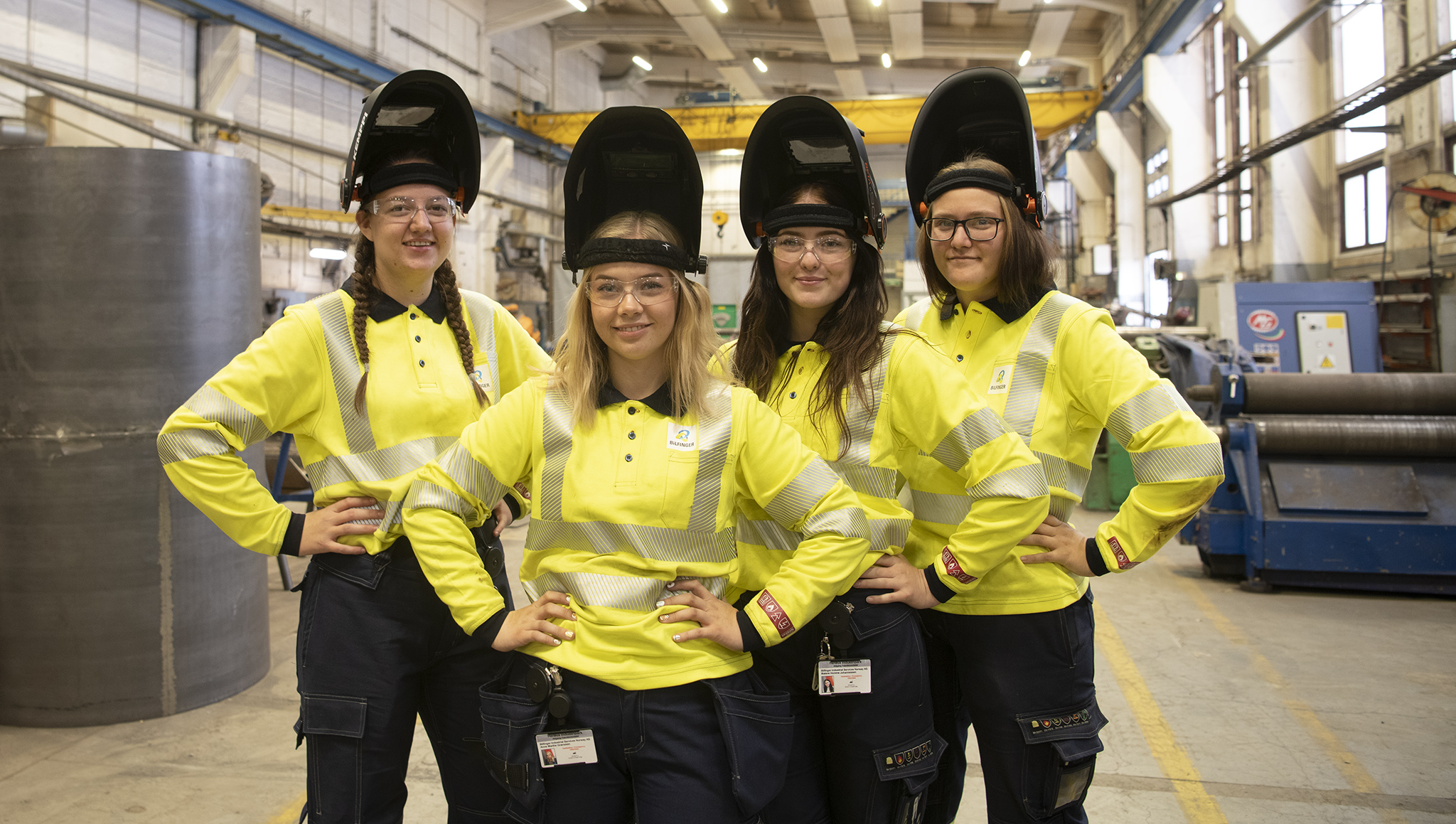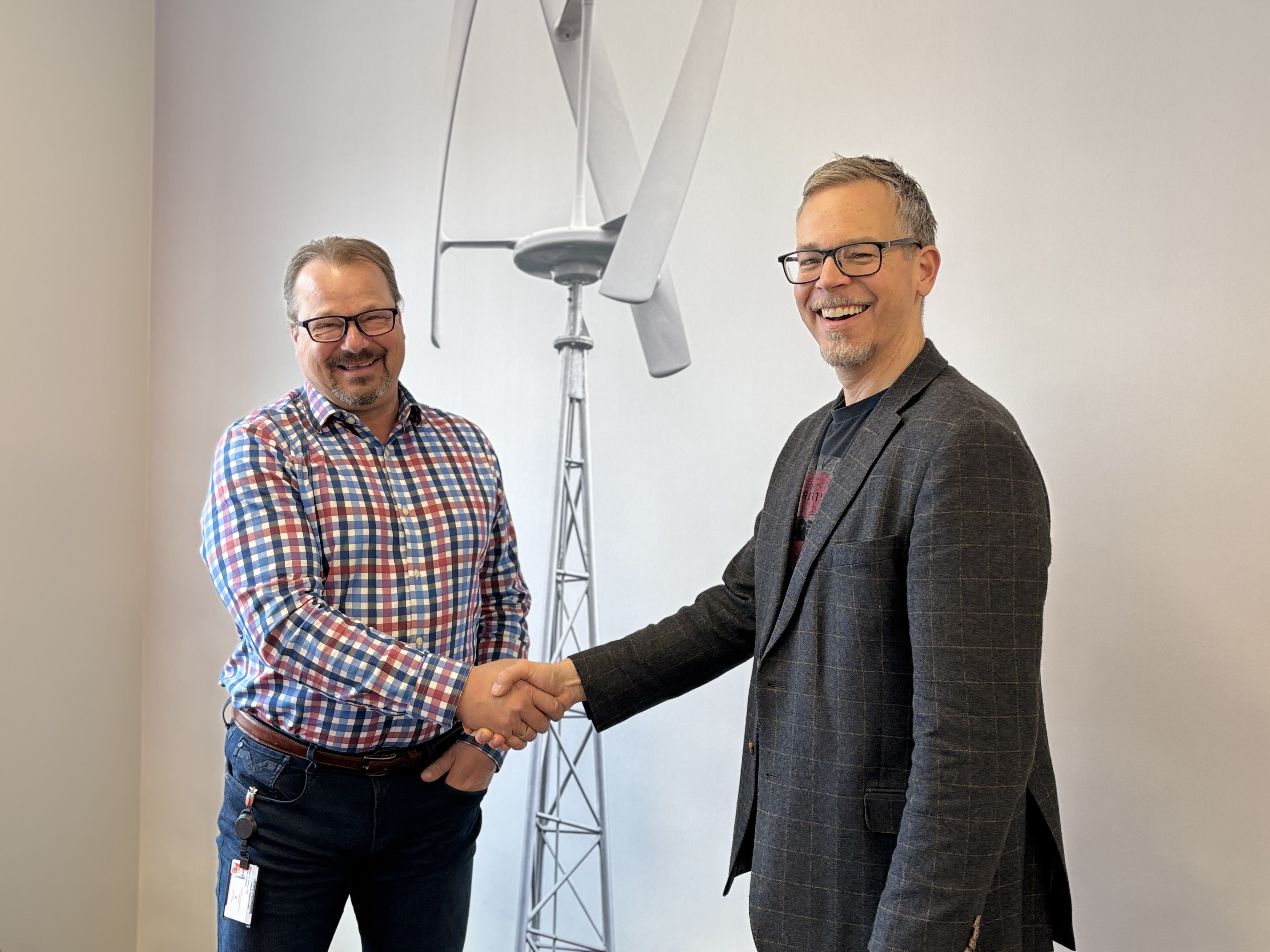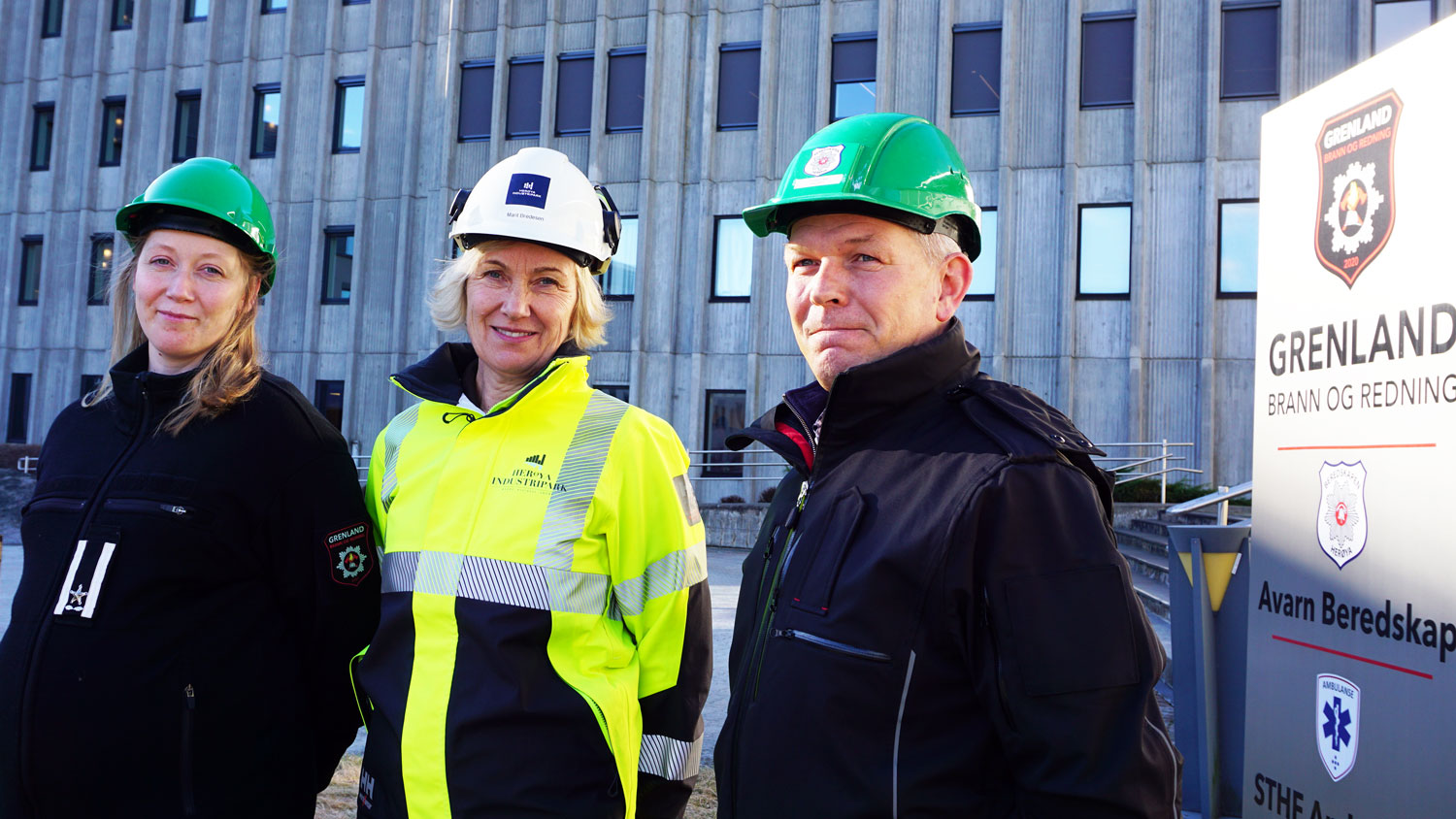The apprentices started at Bilfinger on 1 September. The first two weeks the apprentices went through HSE training and mandatory topics. The four girls have their very first week out in the workshops when we interview them.
"So it is perhaps a little early to ask what you think about working in Bilfinger?"
"I can say already that I thrive," Malene Homme Johannessen answers quickly.
"Why is it that you have so many girls applying for fabrication this year?"
"It probably has something to do with the fact that welding has caught the girls at school," says apprentice manager at Bilfinger Håkon Wefald. "They thought it was fun and got a feeling of mastery of it with welding. Some of them have been with us on placement and seen what the workshop jobs are about."

Girls in boys' professions
"Is it a conscious choice or coincidence that you have ended up in boys' professions, girls?"
"I have always been a lot with boys and worked with them. I knew that it is absolutely perfect to work with boys," says Malene. Anne Marthe Grønstein believes that her choice is random. "I do not think that something is a girl's job and something is a man's job. I think this job is right for me and I do not think that I have chosen a male-dominated profession. Whether I work with women or men, it is not relevant at all".
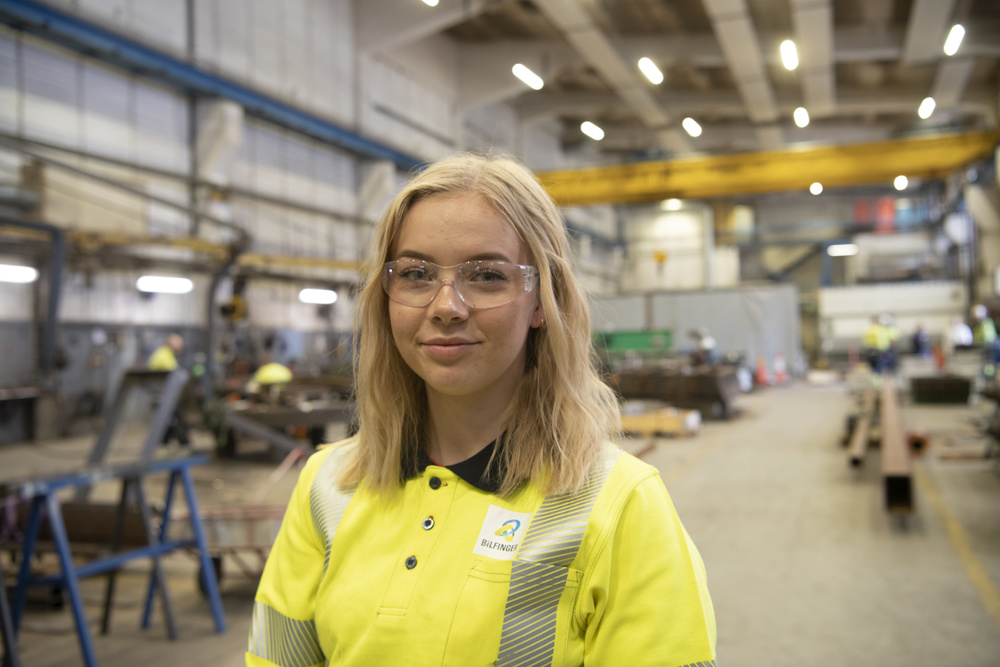
"Have they welcomed you as girls or colleagues?"
"We are accepted as apprentices," Anne Marthe answers. "We are well taken care of and get the help we need to learn the subject."
50 interviews for 17 apprenticeships
"This year we experienced there were a number of girls who applied for vocational subjects. We conducted 50 interviews to fill 17 apprenticeships," says Wefald. "Five girls got an apprenticeship, and we know that it is positive for us to have girls in the workshops. We already have a girl who is a coordinator and one who is a welder. It's a strength for the work environment. The boys benefit from the fact that girls come in among their colleagues."
"We did not choose girls because they were girls. The four girls got an apprenticeship because we considered them to be well qualified. They did good interviews, and we gained confidence that they will become skilled profesionals,"says unit manager for the metal workshop, Ole Morten Fossen. "We also assessed the grades, of course."
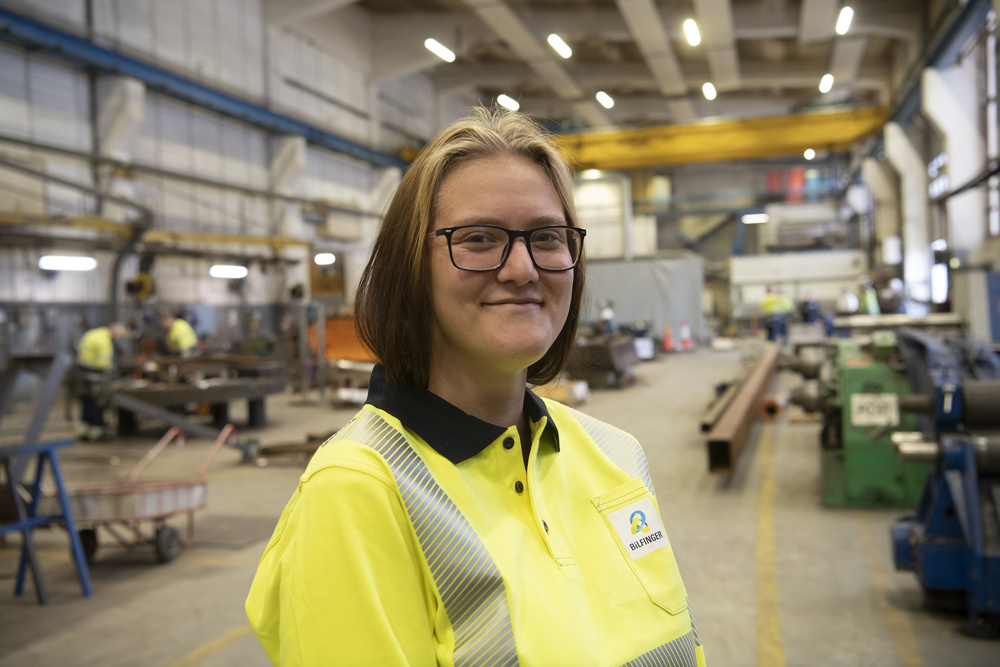
Pay during training
"Are vocational subjects more popular now than before?
"I think the pendulum is about to turn from theoretical to practical subjects," Wefald answers. "In the past, many parents have thought that theoretical studies are the only good choice. Now there is a greater focus on vocational subjects. In ten years, we will be short of 100,000 skilled workers unless more people choose a practical education." He is supported by Andrine Roe Kåsin. "Yes, I think many young people want to go to work sooner and earn money instead of studying long term at school."
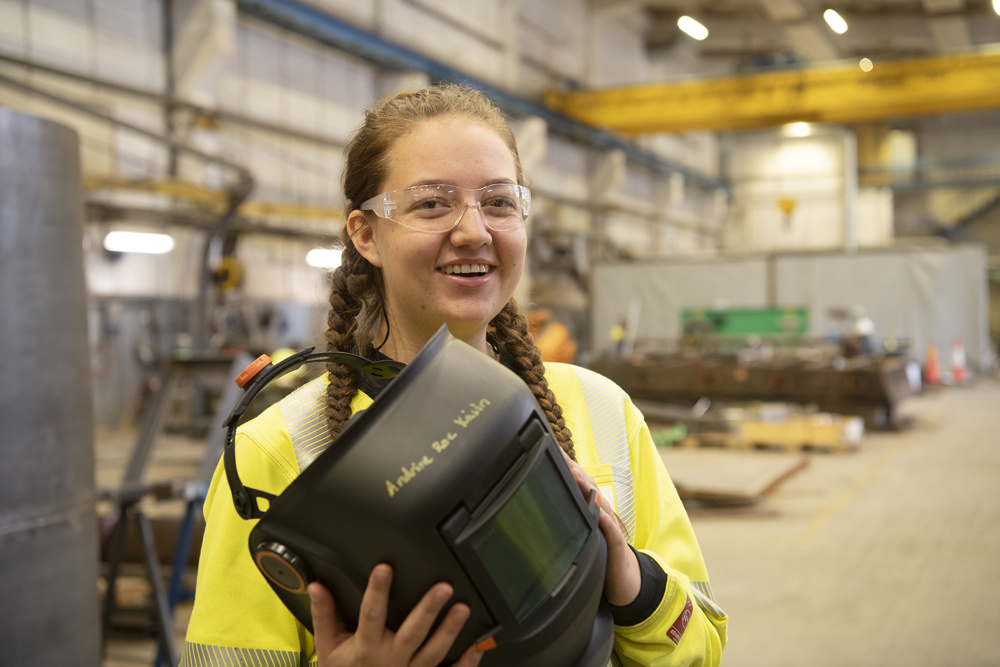
Vocational subjects mean two years at school and two years of training in a company before finishing a skilled worker with a basic salary of between 400,000 and 450,000 NOK.
"And we get paid during the apprenticeship," Andrine says. "I have just started training and have about 11,000 NOKs a month now."
The apprentice receives 30 per cent of skilled workers' salary in the first half of the year. The salary increases every six months, and for the last six months of the apprenticeship, the payment is 75 per cent of the skilled worker's salary. "We have been told many times that it is profitable to take vocational subjects. It is a secure education, and we get paid during the apprenticeship," says Andrine.
Secure profession for the future
"I want to take all of the welding certificates, and then I want to work as a welder in the North Sea," says Malene Homme Johannessen. "I might consider welding underwater. I really know very well what I want in the future."
"The skilled worker education is the way to safe jobs," Wefald states.
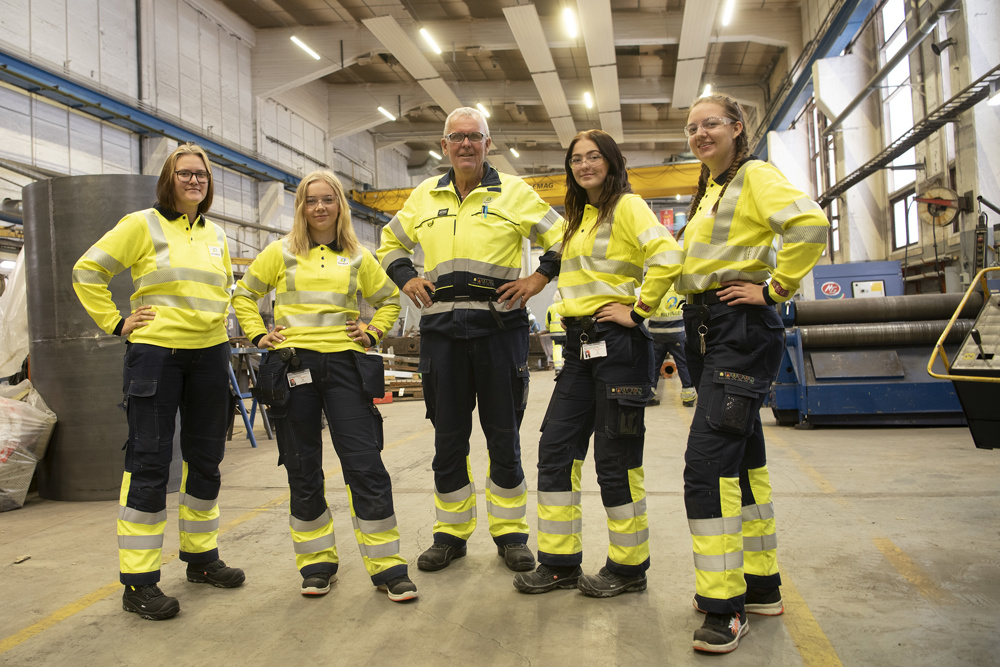
06. October 2021

